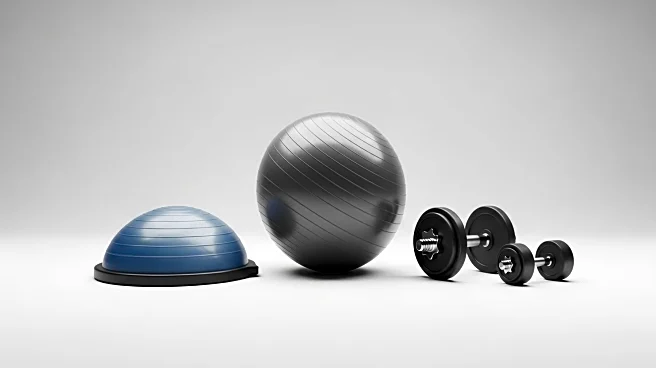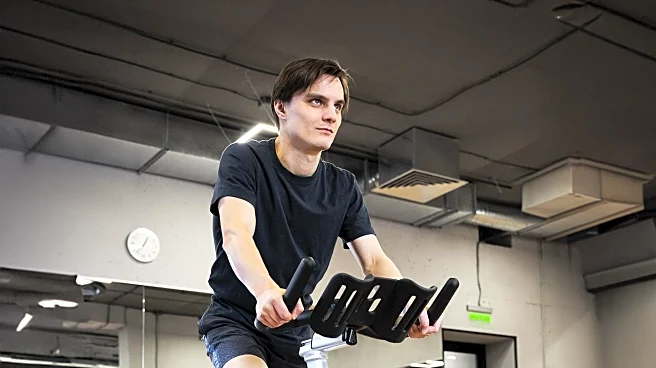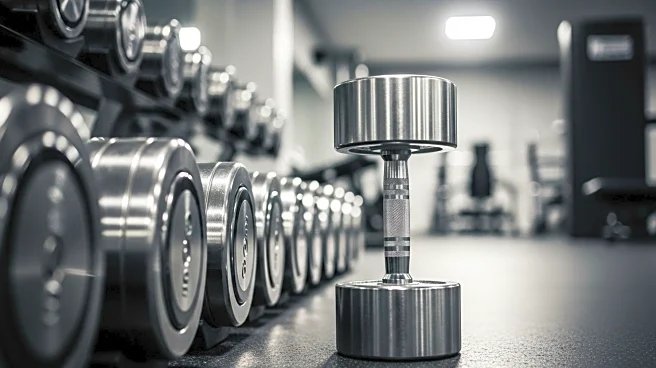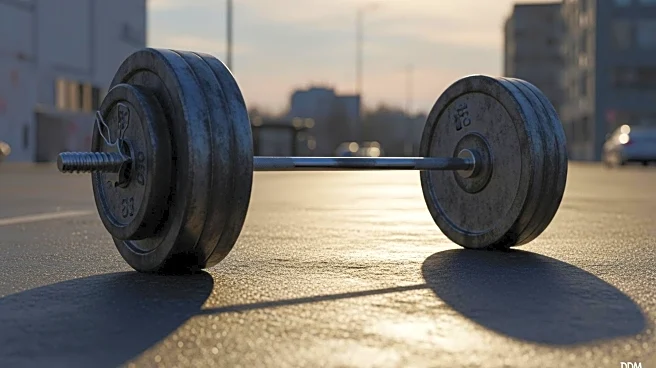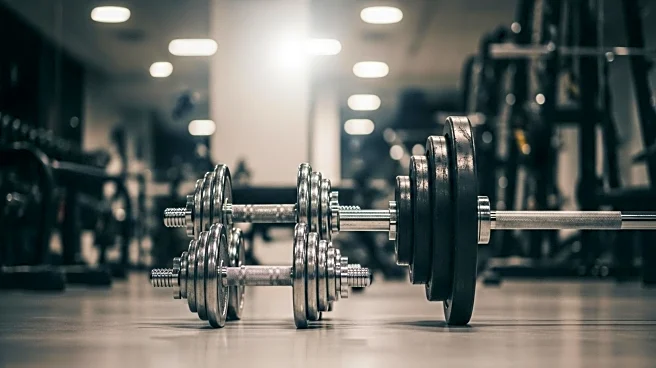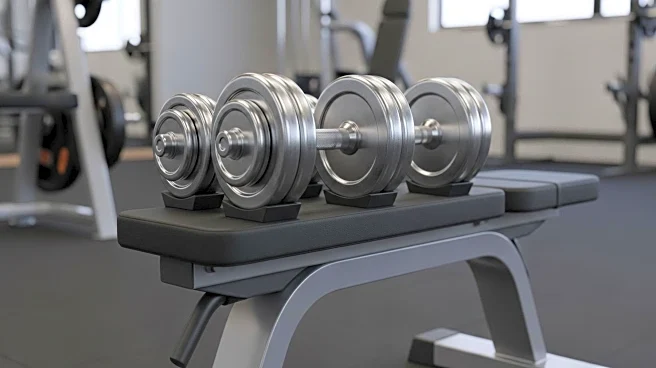What is the story about?
What's Happening?
Ebenezer Samuel, C.S.C.S., a fitness director, has introduced a method called 'Reps in Reserve' (RIR) to optimize muscle growth during workouts. This approach challenges individuals to perform exercises until they feel they can only complete two more reps with good form, rather than pushing to failure. The technique aims to provide the necessary intensity for muscle growth without exhausting the body prematurely. Samuel emphasizes that while chasing the pump can lead to muscle gains, it often involves isolation exercises and lighter weights, which may not be as effective as compound movements. The RIR method encourages a balance between effort and form, ensuring that the final reps are challenging but achievable.
Why It's Important?
The 'Reps in Reserve' technique offers a strategic approach to muscle building, potentially benefiting fitness enthusiasts and athletes seeking to maximize their workout efficiency. By focusing on maintaining form and intensity, individuals can achieve better muscle growth without the risk of overtraining or injury. This method could shift traditional workout paradigms, encouraging a more sustainable and effective training regimen. Fitness professionals and gym-goers may find this approach valuable in optimizing their exercise routines, leading to improved physical performance and muscle development.
What's Next?
As the 'Reps in Reserve' method gains traction, fitness communities and trainers might begin to incorporate this technique into standard training programs. This could lead to a broader acceptance of intensity-focused workouts, potentially influencing gym culture and personal training practices. Fitness enthusiasts may start experimenting with RIR to tailor their routines for better results, while fitness centers might offer workshops or classes to educate members on this approach.
Beyond the Headlines
The adoption of the 'Reps in Reserve' technique could have long-term implications for the fitness industry, promoting a shift towards more scientifically-backed workout strategies. This method may encourage a deeper understanding of muscle physiology and training principles, fostering a culture of informed exercise practices. Additionally, it could inspire further research into effective muscle-building techniques, contributing to advancements in sports science and fitness education.
AI Generated Content
Do you find this article useful?


